

To all the students of Hashi, with whom Ive shared the joys of Japanese cuisine.
INTRODUCTION

Food is an essential part of Japanese culture. From comforting bowls of ramen or nabe, to beautifully presented sushi, food is everywhere.
The connection between food and the natural environment is clear to see in Japan, as is the connection of ingredients to the season. Stretching back, Japan traditionally produced the food it needed rather than importing goods, and Japanese chefs learnt to cook with the seasons, as well as whatever is available in their specific locality. This tradition is still seen throughout the country, and growing up in Kyoto we always had an abundance of mountain vegetables. Particular favourites of mine include freshly picked bamboo shoots in spring, with their nutty, woody flavour, and the earthy matsutake mushroom, also known as the Japanese truffle, which is rampant in autumn.
Japans landscape is incredibly varied. Consisting of four main islands across 1,900 miles, there are vast mountain ranges which are fertile lands for growing vegetables, rice, mushrooms, fruits and nuts. The climate varies from island to island, and indeed province to province, so each region has its own unique way of preparing what are seen as signature Japanese dishes. For example, okonomiyaki in Osaka would be very different from okonomiyaki in Hiroshima. Both are a savoury pancake with a base of egg, flour, cabbage and spring onion, to which you can add extra vegetables, but the Osaka version would mix all the extra ingredients in with the base whereas in Hiroshima all the ingredients are layered, with an addition of noodles.
ANCIENT HERITAGE
Kyoto, which happens to be my hometown, is considered to be the Japanese capital for vegetarian food due to its long tradition of shojin ryori, the vegan diet eaten by Buddhist monks in Japan. Typically, shojin ryori meals are composed of different plant-based foods in a way believed to bring balance and alignment to the body, mind and spirit. Having arrived in the region in the sixth century, shojin ryori continues to influence food in Kyoto even today, particularly considering the rule of five, whereby each meal offers five colours and five flavours, providing a nutritious, beautiful and delicious dining experience.
Not only home to shojin ryori, as a city surrounded by mountains and freshwater springs, Kyoto is also renowned for its , which is a staple of the Japanese diet. It is an incredibly versatile ingredient, high in protein and easy to transform into something delicious. Incidentally it contains less fat and fewer calories than the same quantity of meat. It is one of my favourite ingredients, and the way that it is revered, displayed and enjoyed in Kyoto is similar to cheese in France, with endless varieties available fresh, aged, firm, soft, creamy, crumbly, fermented, smoked. Within these pages are a number of delicious recipes, encouraging you to embrace this most Japanese of ingredients I hope you come to love it as I do.
BENEFITS OF A JAPANESE DIET
As a health-conscious chef, I have long been aware of the specific health benefits of the Japanese diet. Japan boasts one of the highest life expectancies in the world, and only 3.6 per cent of the Japanese population have a body mass index over 30, which is the international standard for obesity. As a comparison, some other countries have close to a third of the population over this threshold.
The reasons for Japans favourable statistics are undoubtedly the diet and the fact that many Japanese people subscribe to two notions: that you should eat until you are 80 per cent full, and that you eat with your eyes a nod to the importance of colours, crockery and food presentation. When we eat with chopsticks, we tend to slow down, and so you find yourself enjoying the sight of your meal for longer.
Typically, Japanese meals consist of an array of textures and flavours. They are eaten slowly and, in comparison to the western diet, contain fewer fats or processed ingredients, and far less dairy and meat. Japan is far from a vegetarian country as we consume a vast amount of fish; however, vegetables and soy products are staple ingredients in our diets, and vegetarianism in Japan is on the rise.
Three of the most common Japanese ingredients are miso, seaweed and tofu. These contain many vitamins and minerals that promote excellent health while, most importantly, leading to mouth-wateringly good food. The fact that they are already essential to a traditional Japanese diet means that the step to vegetarianism is a relatively small one.
As an added bonus, , an ingredient most associated with Japanese cuisine, is full of calcium and vitamins A and C, all of which are great for your skin, hair and nails. Beyond the exterior benefits, seaweed is known to prevent high blood pressure, promote digestion and aid detoxing. On top of that, it gives a depth of flavour and is a vital ingredient for Japanese vegetarian cooking.
Offering authentic and delicious recipes, this book will give you an insight into the cuisine that gives Japan one of the lowest obesity rates and longest life expectancies in the world. With recipes that have been handed down and slightly adapted across generations, wherever you live, this is a book that will take you to Japan without leaving the comfort of your own kitchen.
STORECUPBOARD INGREDIENTS
Most Japanese kitchens are equipped with these staple ingredients, and they are vital for creating authentic Japanese flavours. Im pleased to say all of them are easily found in Japanese supermarkets, some Asian supermarkets and online.
Ao-nori (seaweed) powder A condiment for sprinkling and seasoning, much like salt and pepper. Ao-nori has the unmistakable flavour of seaweed and is bright green in colour. (For more on seaweed, see ).
Chilli-infused sesame oil (rahyu) This is often used in Chinese and Japanese dishes such as gyoza and ramen.
Dried shiitake mushrooms (hoshi shiitake) One of the ingredients for vegetarian stock. They have a much stronger flavour than fresh ones and are used in a variety of cooked dishes.
Japanese horseradish (wasabi) Although this is a type of horseradish, it is somewhat different to the Western variety. The root of the horseradish is much smaller and pale green in colour. Ready-made pastes or dried forms are widely available, however the actual wasabi content present is often extremely low. Fresh wasabi is available online.
Japanese mayonnaise (mayonaizu) Japanese mayonnaise is much more yellow in colour than the typical Western mayonnaise as it contains more egg yolk. It is also creamier and has a more citrussy flavour.
Kombu dashi powder (kombu dashi no moto) Dashi stock powder is something the Japanese use daily. Instant kombu dashi stock is the vegetarian alternative to the fish-based one and likewise available in powder form. Simply stir the powder or liquid into boiling water.
Konnyaku yam cake This has very little taste of its own and is perfect to cook slowly to absorb all the other flavours. It has a slightly oceanic taste and smell of seaweed. It is valued more for its texture than for its flavour and is a good for low-calorie diets as it has virtually no calories.

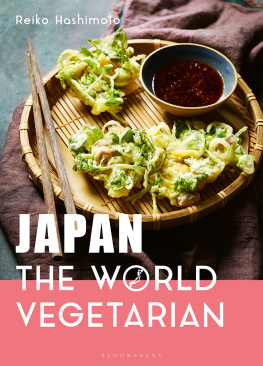

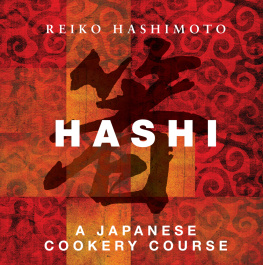
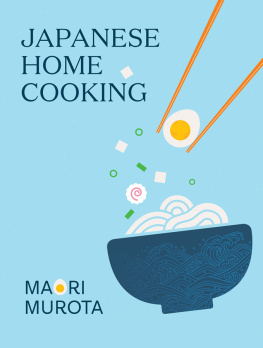
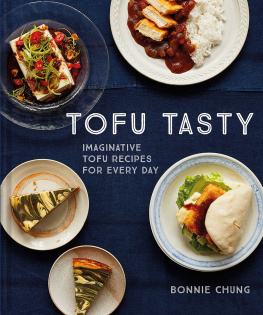

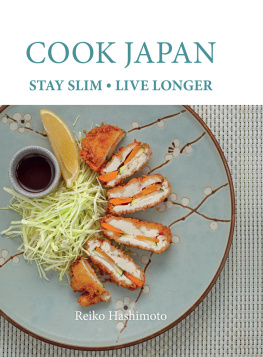

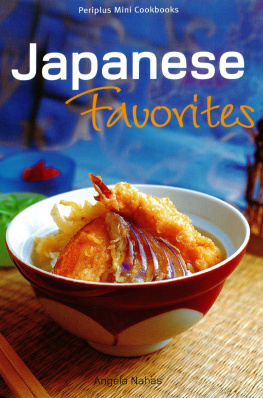
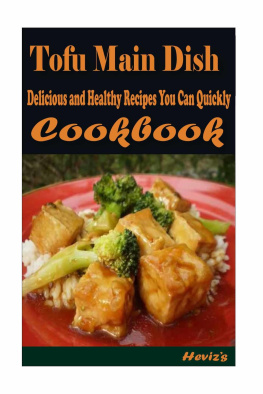
![Miyoko Nishimoto Schinner - Japanese Cooking: Contemporary & Traditional [Simple, Delicious, and Vegan]](/uploads/posts/book/41405/thumbs/miyoko-nishimoto-schinner-japanese-cooking.jpg)



